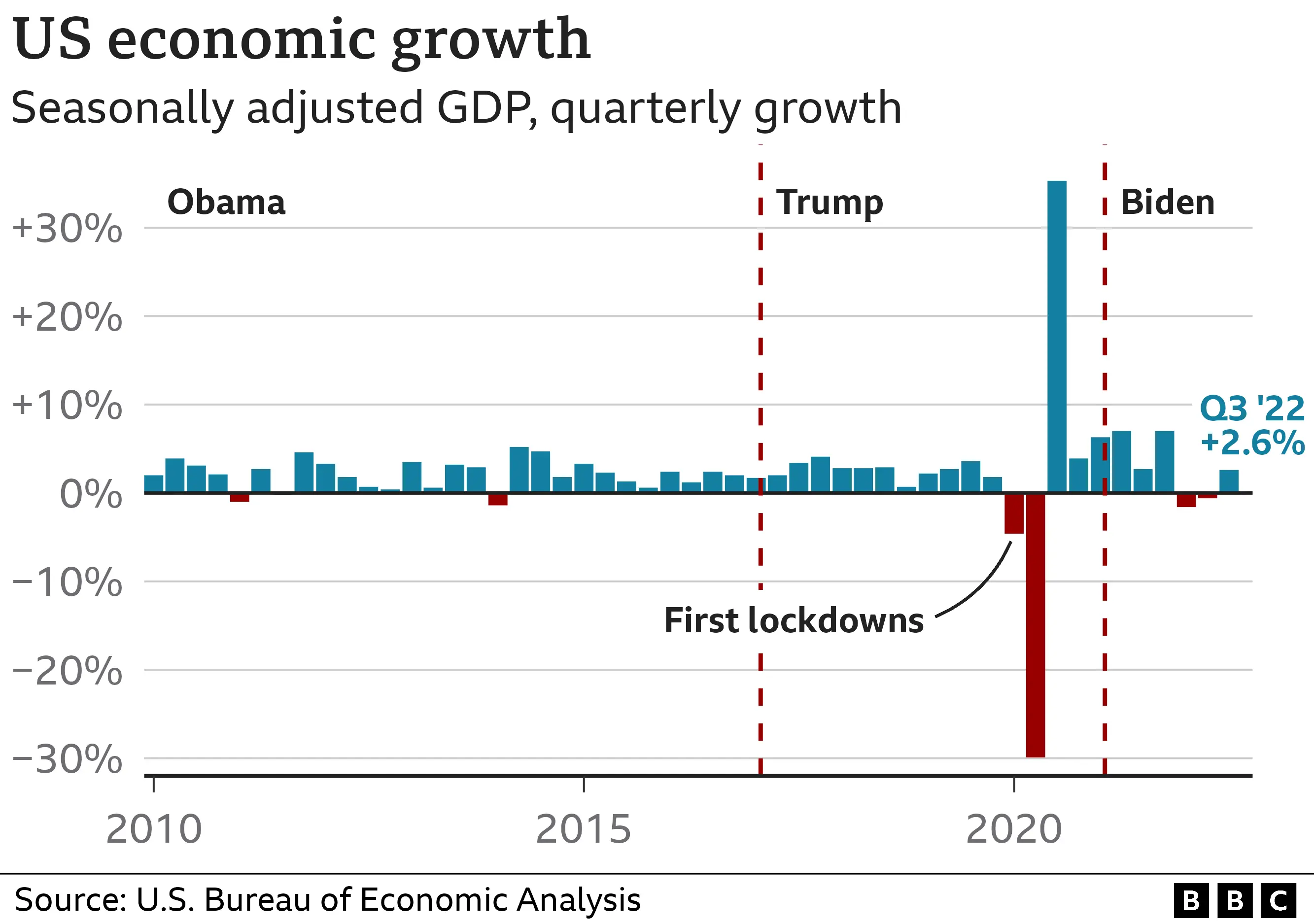Joe Biden And The Economy: Assessing The Impact Of His Presidency

Table of Contents
President Joe Biden inherited a complex economic landscape, marked by the lingering effects of the COVID-19 pandemic and pre-existing challenges. This article delves into a comprehensive assessment of his economic policies and their impact on key indicators like inflation, unemployment, and GDP growth, providing a balanced perspective on the state of the American economy under his presidency. We will examine the successes and failures, considering both supportive and critical viewpoints to offer a nuanced understanding of the Biden administration's economic record.
Biden's Economic Policies and Initiatives
President Biden's economic agenda has been largely defined by two significant legislative acts and a series of executive orders aimed at stimulating economic growth, addressing inequality, and bolstering infrastructure.
The American Rescue Plan (ARP)
The American Rescue Plan, enacted in March 2021, was a massive stimulus package designed to address the economic fallout from the COVID-19 pandemic. Its key components included:
- Increased unemployment benefits: Extended and enhanced unemployment insurance benefits to provide crucial support to unemployed Americans.
- Direct stimulus payments: Provided direct cash payments to individuals and families to boost consumer spending and alleviate financial hardship.
- Funding for state and local governments: Aimed to prevent widespread layoffs of public sector workers and maintain essential services.
- COVID-19 vaccine distribution: Significant funding allocated to accelerate the nationwide rollout of COVID-19 vaccines.
The ARP's short-term effects were largely positive, contributing to a rapid decline in unemployment. However, concerns were raised regarding its potential to fuel inflation due to the substantial increase in government spending. The long-term consequences are still being debated among economists, with differing opinions on its overall impact on economic growth and national debt.
The Infrastructure Investment and Jobs Act (IIJA)
The Infrastructure Investment and Jobs Act, signed into law in November 2021, represents a significant long-term investment in America's infrastructure. This bipartisan bill allocates substantial funds to:
- Roads and bridges: Repairing and upgrading the nation's aging infrastructure.
- Public transit: Modernizing and expanding public transportation systems.
- Broadband internet: Expanding access to high-speed internet across the country.
- Electric grid upgrades: Improving the resilience and efficiency of the national electric grid.
The IIJA is expected to create numerous jobs, stimulate economic growth, and improve the efficiency of the nation's infrastructure. However, the actual impact will depend on effective implementation and overcoming potential challenges such as bureaucratic hurdles and supply chain constraints. The long-term economic benefits will unfold over many years.
Other Key Economic Policies
Beyond the ARP and IIJA, the Biden administration has implemented other significant economic policies, including tax policies aimed at increasing corporate tax rates and expanding tax credits for renewable energy, and climate change initiatives intended to transition towards a green economy. These policies have varying impacts across different sectors, with some businesses experiencing increased costs while others benefit from government support for green technologies. The overall economic effects of these diverse policies are complex and require further study.
Key Economic Indicators Under Biden's Presidency
Analyzing key economic indicators provides a clearer picture of the economic performance under President Biden's administration.
Inflation
Inflation has been a significant challenge during Biden's presidency, reaching levels not seen in decades. Contributing factors include supply chain disruptions, increased demand following the pandemic, and expansionary monetary policies. A comparison with historical inflation rates under previous administrations is crucial for context and understanding. While the causes of inflation are multi-faceted and global in nature, the administration's policies and their impact on inflation rates remain a subject of ongoing debate and analysis.
Unemployment
The unemployment rate has generally trended downwards during Biden's presidency, reaching pre-pandemic levels. However, it's important to consider demographic factors and regional variations. Analyzing job creation and loss in different sectors, and comparing unemployment rates to pre-pandemic levels and those under previous administrations, offers a comprehensive view of the employment landscape.
GDP Growth
GDP growth under Biden's tenure has been mixed, influenced by factors such as consumer spending, business investment, and government spending. Comparing GDP growth rates to historical averages and considering contributing factors, including global economic conditions, provides a more complete analysis of the economy's overall performance.
Criticisms and Alternative Perspectives
Critics of Biden's economic policies argue that the large stimulus packages have contributed to inflation and increased the national debt. Concerns have also been raised about the potential for unintended consequences from certain regulatory actions. Economists and political opponents offer differing perspectives on the effectiveness and long-term sustainability of Biden's economic agenda. These differing viewpoints are vital to understanding the complexities of the economic situation.
Conclusion
President Biden's economic policies have had a mixed impact, with significant successes in reducing unemployment and substantial investments in infrastructure. However, the significant rise in inflation presents a serious challenge. The long-term effects of the American Rescue Plan and the Infrastructure Investment and Jobs Act are still unfolding and require continued monitoring and analysis. Further research is needed to fully assess the long-term effects of these policies and compare Biden's economic performance to that of previous administrations. Understanding Joe Biden and the economy requires a careful consideration of multiple perspectives and ongoing data analysis. Engage in informed discussions and continue researching to form your own well-informed opinion on this complex issue.

Featured Posts
-
 Ekonomik Ve Siyasi Is Birligi Tuerkiye Endonezya Anlasmalari Detaylari
May 02, 2025
Ekonomik Ve Siyasi Is Birligi Tuerkiye Endonezya Anlasmalari Detaylari
May 02, 2025 -
 Fortnite Icon Series Latest Skin Officially Announced
May 02, 2025
Fortnite Icon Series Latest Skin Officially Announced
May 02, 2025 -
 Streaming Now Michael Sheen And Sharon Horgan In A Powerful New Series
May 02, 2025
Streaming Now Michael Sheen And Sharon Horgan In A Powerful New Series
May 02, 2025 -
 Daisy May Coopers Honest Admission Job Loss And Stealing
May 02, 2025
Daisy May Coopers Honest Admission Job Loss And Stealing
May 02, 2025 -
 Lotto Jackpot Results Saturday April 12th
May 02, 2025
Lotto Jackpot Results Saturday April 12th
May 02, 2025
